|
|
|
 |
 |
 |
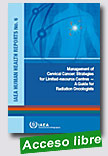 |
Management of Cervical Cancer: Strategies for Limited-resource Centres - A Guide for Radiation Oncologists
IAEA Human Health Reports, 2013, 77 p.
Clinical guidelines for the management of cervical cancer exist in the published literature. However, these guidelines have usually been developed in and for an affluent environment where all modern diagnosis and treatment modalities and tools are available to the practitioner. This publication is aimed at radiation oncologists working in centres with limited resources and treating a large number of patients with cervical |
cancer. The approach and techniques recommended are intended to be evidence based, simple, feasible and resource-sparing, to the extent that this is possible when dealing with a complex treatment modality such as radiotherapy.
Extraído de:
http://www-pub.iaea.org/books/IAEABooks/8738/Management-of-Cervical-Cancer-Strategies-for-Limited-resource-Centres-A-Guide-for-Radiation-Oncologists
|
 |
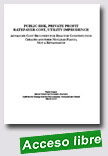 |
Public Risk, Private Profit Ratepayer Cost, Utility Imprudence - Advanced Cost Recovery For Reactor Construction Creates Another Nuclear Fiasco, not a Renaissance
Institute for Energy and the Environment, Vermont Law School, March 2013, 86 p.
This paper presents an economic analysis of the new nuclear reactors being built in the South East United States, specifically South Carolina and Florida, where advanced cost recovery statutes to subsidize nuclear reactor construction have been enacted. |
Extraído de: http://www.cleanenergy.org/index.php?/Reports-and-Publications.html
|
 |
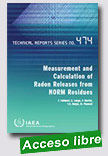 |
Measurement and Calculation of Radon Releases from NORM Residues
Technical Reports Series 474 STI/DOC/010/474 (ISBN:978-92-0-142610-9) 85 p., 2013
This publication provides a comprehensive overview of the prediction, measurement and monitoring of radon releases from NORM residues, including uranium mining and milling residues. It presents factors controlling radon emanation and exhalation from residue materials, repository cover characteristics, methods for predicting radon exhalation flux
|
(including models and the required input parameters and variables), measurement methods for radon concentration in soil gas and for radon exhalation from a surface, and radon monitoring programmes. The publication also includes a case study of radon exhalation from uranium tailings pile at Jaduguda, India, and annexes presenting mathematical development of radon diffusion equations.
Extraído de: http://www-pub.iaea.org/books/IAEABooks/10369/Measurement-and-Calculation-of-Radon-Releases-from-NORM-Residues |
 |
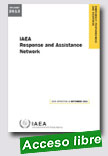 |
The publication is a tool for: facilitating the provision of international assistance in the event of a nuclear or radiological incident or emergency; cooperation between States, their Competent Authorities and the IAEA; and harmonization of response capabilities of States offering assistance under the Response and Assistance Network (RANET). The publication may also assist Competent Authorities and other response organizations in their efforts to establish and;or maintain their own response capabilities. |
Extraído de:
http://www-pub.iaea.org/MTCD/Publications/PDF/EPR-RANET_2013_web.pdf
|
 |
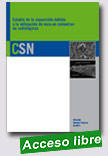 |
Estudio de la exposición debida a la utilización de torio en industrias no radiológicas
Consejo de Seguridad Nuclear, 4 diciembre 2013, 18 p.
El objetivo global del proyecto ha sido la determinación del impacto radiológico que el uso de materiales toriados ejerce sobre la población española y el desarrollo de una metodología que permita cuantificar el impacto en instalaciones específicas. Para su realización se ha partido de los documentos de la Unión Europea Reference levels for workplaces processing materials with enhanced levels of naturally occurring radionuclides y Establishment of reference
|
levels for regulatory control of workplaces where materials are processed which contain enhanced levels of naturally-occurring radionuclides, así como el de la Comisión Reguladora Nuclear de los Estados Unidos de América Systematic radiological assessment of exemptions for source and byproduct materials donde se señala la necesidad de efectuar estudios del impacto radiológico sobre la población debidos a la utilización de diversos radionucleidos naturales, entre ellos el uso de materiales toriados. Así mismo, se han utilizado otros documentos referidos al uso de materiales con contenido radiactivo natural.
Extraído de:
https://www.csn.es/images/stories/publicaciones/unitarias/informes_
tecnicos/torio_2013_final.pdf
|
 |
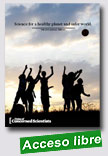 |
Science for a Healthy Planet and Safer World - The 2013 Annual Report
Union of Concerned Scientists, 2014, 28 p.
Polarization and political gridlock in Washington were worse than ever in 2013. But, thanks to your help, we didn’t let that stop us—or even slow us down. We fought partisanship with solutions that address oil consumption, clean energy, nuclear safety, healthier food, the consequences of global warming, and much more.
Across the country, we championed the vital roles that independent science and technical analysis should play in
|
making choices that build a healthier planet and safer world, and found widespread enthusiasm and many new partners for this solutions-oriented approach.
In New Jersey, one year after Hurricane Sandy, we gathered state and federal officials, scientists, and community groups to reflect upon the realities of climate change and help the region prepare for a future with more disruptive weather.
In California, we engaged experts and activists from across the political spectrum to explore how communities can access and apply the best available scientific information on hydraulic fracturing and other unconventional oil and gas extraction techniques.
We beat back the fossil fuel industry’s attempts to weaken renewable energy standards in a dozen states and helped 14 states pass new standards or strengthen existing ones.
We worked with both industry representatives and environmentalists to finalize tough new vehicle standards that will nearly double the fuel economy of new cars and light trucks by 2025, saving millions of barrels of oil each day.
Extraído de: http://www.ucsusa.org/assets/documents/ucs/annual-report-2013.pdf
|
 |
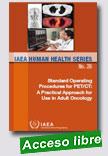
|
Standard Operating Procedures for PET/CT: A Practical Approach for Use in Adult Oncology
IAEA Human Health Series, 2013, 116 p.
Written by experts from several continents, the book provides an up to date, evidence based and comprehensive overview of operating procedures forFDG-PET/CT imaging in adult oncology patients. The text is based on consensus and agreement among the authors, following a systematic approach of relying on personal experience and the available scientific evidence on all the subjects included. Due to the
|
evolving nature of PET/CT imaging, which is a rapidly growing technology, this publication will undoubtedly need to be updated on a regular basis. It may well be that each PET/CT centre will have to modify the recommendations provided here to suit its own particular circumstances, according to, inter alia, the type of scanner, patient population, use of intravenous contrast, availability of FDG, professional staff experience, local regulations andpreferences of referring physicians.
Extraído de: http://www-pub.iaea.org/MTCD/Publications/PDF/Pub1616_web.pdf
|
 |
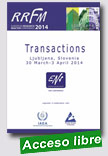 |
European Research Reactor Conference 2014 - Transactions
European Nuclear Society, 2014, 745 p.
In 2014 the European Research Reactor Conference, RRFM, will take place in Ljubljana, Slovenia.
The conference programme will revolve around a series of Plenary Sessions dedicated to the latest global developments with regards to research reactor technology and management.
Parallel sessions will focus on all areas of the Fuel Cycle of Research Reactors, their Utilisation, Operation and |
Management as well as new Research Reactor projects and Innovative methods in reactor physics and thermo-hydraulics. In 2014 the European Research Reactor Conference will furthermore give special attention to Safety and Security of Research Reactors.
Extraído de: http://www.euronuclear.org/meetings/
|
 |
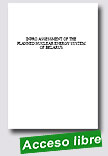 |
INPRO Assessment of the Planned Nuclear Energy System of Belarus
IAEA TECDOC 1716 IAEA-TECDOC-1716 (ISBN:978-92-0-112910-9)
Language: English, Date Published: 2013
INPRO is an international project to help ensure that nuclear energy is available to contribute in a sustainable manner to meeting the energy needs of the 21st century. Between July 2009 and October 2011, Belarus undertook a review using INPRO methodology of their planned nuclear energy system with regard to its long-range sustainability. This report
|
comprises a description of the assessed nuclear energy system based on novel reactors of Russian design (AES-2006) and the results of assessment of that system using the INPRO methodology. The report identifies follow up actions for the further development and successful implementation of nuclear energy in Belarus. The publication may also serve as a model Nuclear Energy System Assessment for other Member States, as it covers all seven INPRO areas (Safety, Infrastructure, Proliferation Resistance, Physical Protection, Waste Management, Environment and Economics).
Extraído de:
http://www-pub.iaea.org/books/IAEABooks/10583/INPRO-Assessment-of-the-Planned-Nuclear-Energy-System-of-Belarus
|
 |
|
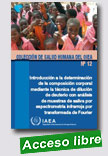
|
Introducción a la determinación de la composición corporal mediante la técnica de dilución de deuterio con análisis de muestras de saliva por espectrometría infrarroja por transformada de Fourier
Colección de Salud Humana del OIEA, 2013, 99 p.
Esta publicación fue elaborada por un grupo internacional de expertos con ánimo de ofrecer una guía práctica y concreta sobre el uso de la técnica de dilución de deuterio en contextos en que vaya a emplearse la espectrometría FTIR para analizar el enriquecimiento en deuterio de muestras de saliva.
|
Este manual va dirigido a cuantos estén empezando a utilizar esta técnica, ya sean nutricionistas, analistas químicos o profesionales de otros campos. En el Nº 3 de la Colección de Salud Humana del OIEA, Assessment of Body Composition and Total Energy Expenditure in Humans by Stable Isotope
Techniques, hay información más detallada sobre los fundamentos teóricos y la aplicación práctica de los métodos más actuales para seguir de cerca la evolución de la composición corporal.
Extraído de:
http://www-pub.iaea.org/MTCD/Publications/PDF/PUB1450s_web.pdf |
 |
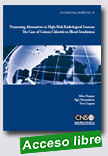 |
Promoting Alternatives to High-Risk Radiological Sources: The Case of Cesium Chloride in Blood Irradiation
James Martin Center for Nonproliferation Studies, March 2014, 40 p.
In 2008, the U.S. National Academy of Sciences published a landmark report Radiation Source Use and Replacement, which examined the feasibility of replacing high-risk radioactive sources with less risky (and most likely non-isotopic alternatives) in order to forestall an act of radiological terrorism. The report expressed particular concern about the threat posed by the continued use of one isotope—cesium chloride—whose
|
products of the metal recycling industries by bringing that radioactive material under regulatory control. In particular, this Code is aimed at harmonizing the approach of States with regard to: (a) Discovering the presence of; and (b) Handling and managing in a safe manner; radioactive material that may inadvertently be present in a consignment. This Code is intended to complement existing international legal instruments, standards and guidance relating to radiation, transport and radioactive waste
Extraído de:
http://www.nonproliferation.org/wp-content/uploads/2014/03/140312_alternative_high_risk_
radiological_sources_cesium_chloride_blood.pdf?utm_
source=NSSPI+News+Digest&utm_campaign=a801f1c7d2-RSS_EMAIL_CAMPAIGN&utm_medium=email&utm_
term=0_d96553fdd0-a801f1c7d2-51249257
|
 |
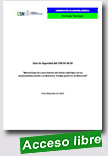 |
Metodología de comprobación del estado radiológico de un emplazamiento previa a su liberación
Consejo de Seguridad Nuclear, 4 diciembre 2013, 18 p.
La presente Guía tiene por objeto recomendar una metodología de comprobación del estado radiológico de un emplazamiento con vistas a su liberación, de forma completa y con un número de medidas razonable.
La comprobación de la situación radiológica de un emplazamiento permitirá determinar si está contaminado y, en tal caso, si después de efectuar actuaciones de limpieza se |
unique characteristics make it especially susceptible to be being used by terrorists. The report recommended that government policies be enacted that would lead to the substitution of less hazardous technologies.
The Academy‘s conclusions were only partially embraced by the United States government. In 2010, an interagency Task Force on Radiation Protection and Security submitted its quadrennial report to the President and Congress. The report emphasized the security measures that had been implemented to protect existing risk-significant radiological sources. It concluded that for cesium chloride, ―immediate phase-out would not be feasible because the sources are extensively used in a wide range of applications in medicine, industry, and research. 1 However, it concluded ―That a gradual stepwise phase-out could be feasible as alternatives become technologically viable and if disposal pathways are identified.‖ It also noted that ―While alternatives exist for some applications, the viability, relative risk reduction achievable, and state of development of these alternatives vary greatly. 2 The area where an alternative to cesium chloride is considered most viable in the short term is its use in blood irradiation. The Task Force report noted that for blood irradiation, ―x ray technologies were cost competitive with radionuclide technologies on an annualized basis‖ although concerns remained about their throughput and reliability. Other technologies, such as linear accelerators (LINACs), could be used for blood irradiation in addition to their principal use in cancer treatment. Replacing cesium chloride in blood irradiators would be particularly useful because the irradiators are primarily used in hospitals and blood banks, which are by necessity publicly accessible facilities, raising security concerns.
Extraído de:
http://csn1.c.mad.interhost.com/images/stories/publicaciones/guias_seguridad/gs-04-03.pdf
|
| |
|
|
|
| |
|
|
|
| |
|
|
|
|
|
